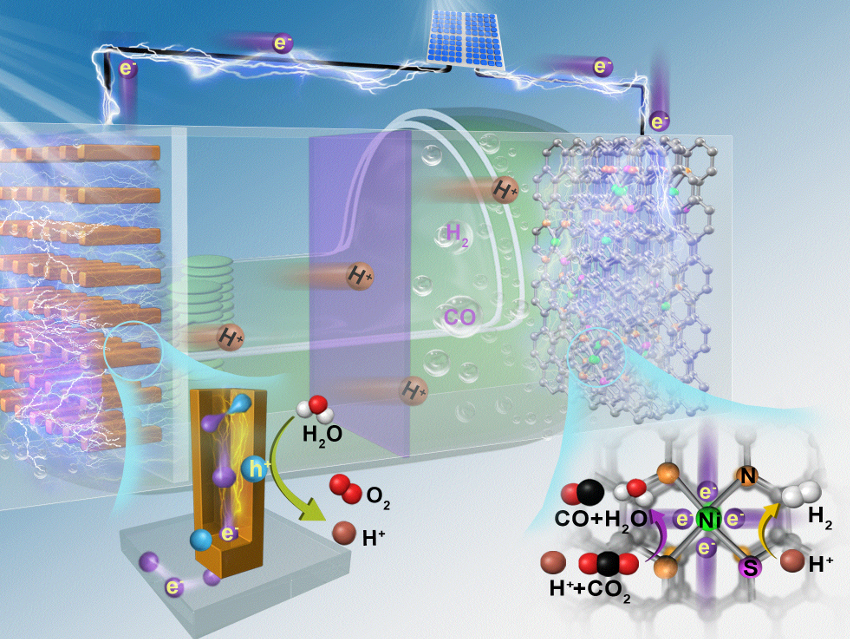Methods for the conversion of carbon dioxide into feedstocks or fuels could be useful to improve the sustainability of the chemical industry. Photocatalysis or photoelectrocatalysis are promising technologies for this kind of transformation, but they often suffer from low efficiency.
Jinlin Long, Fuzhou University, China, and colleagues have designed an artificial photosynthetic (APS) cell to stoichiometrically convert CO2 and water into syngas (a mixture of H2 and CO) under solar light. The APS cell (pictured) consists of two compartments, equipped with a photoanodic semiconductor, a single-atom nickel catalyst, and a proton-conducting membrane. The photoanode harvests photons and converts H2O to O2 and H2. Electrons are transported to the nickel sites to reduce CO2 to CO.
On a laboratory scale, a solar-to-syngas energy conversion efficiency of 13.6 % and tunable CO/H2 ratios between 1:2 and 5:1 were achieved. The integration of the APS cell with photovoltaic cells results in an overall quantum efficiency of 6.29 % for the syngas production. This might allow the low-cost production of syngas using renewable energy.
- High-rate, tunable syngas production with artificial photosynthetic cells,
Jinlin Long, Hongwen Zhang, Jintao Ming, Jiwu Zhao, Quan Gu, Chao Xu, Zhengxin Ding, Rusheng Yuan, Zizhong Zhang, Huaxiang Lin, Xuxu Wang,
Angew. Chem. Int. Ed. 2019.
https://doi.org/10.1002/anie.201902361




